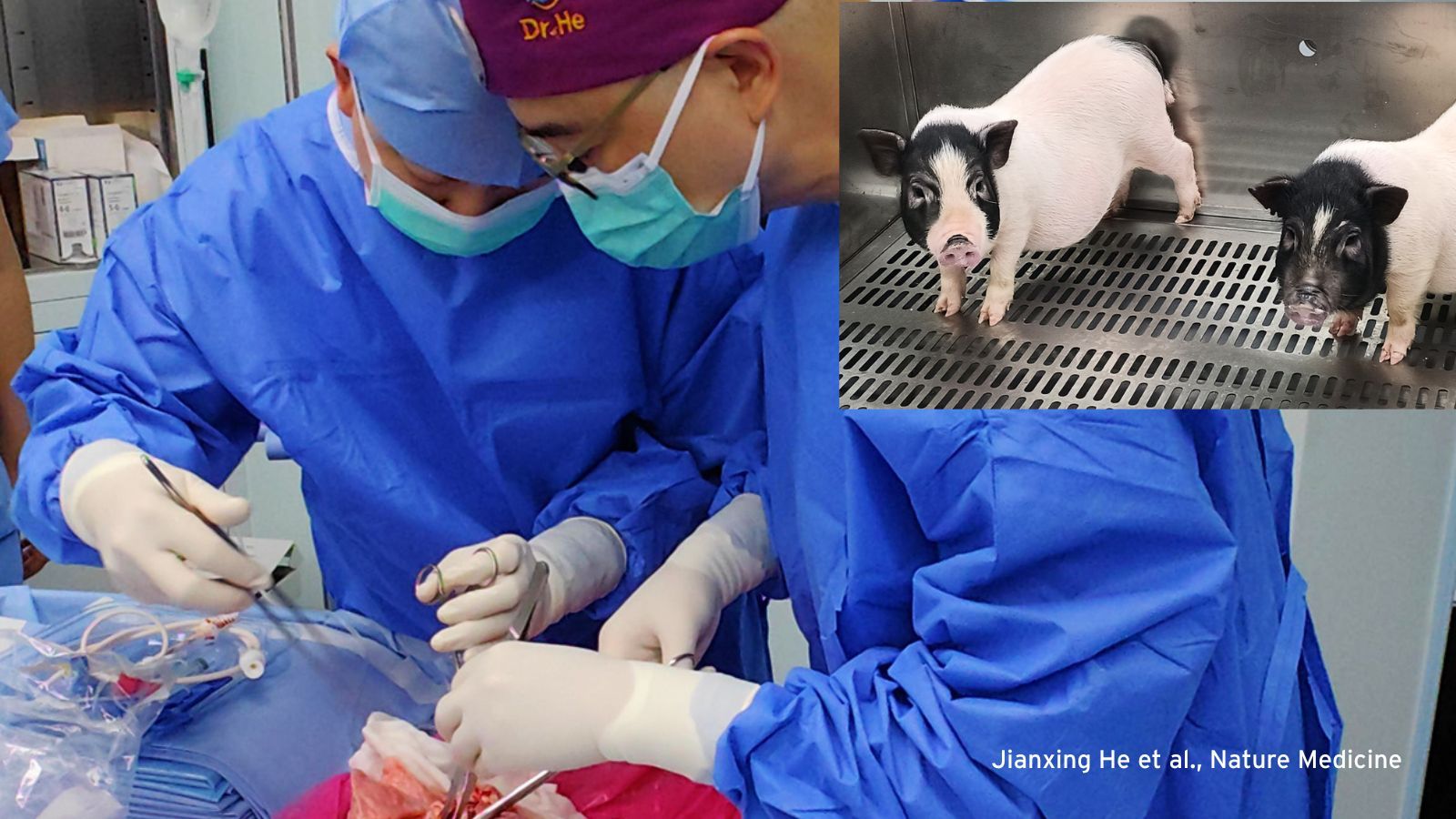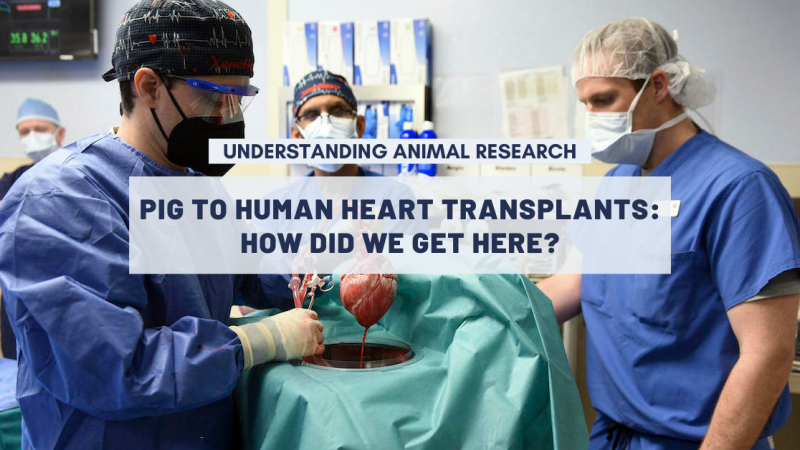
In May 2024, medical history was quietly made in a hospital in Guangzhou, China. For the first time ever, surgeons successfully transplanted a lung from a genetically modified pig into a human recipient, a 39-year-old brain-dead patient. This achievement represents the culmination of decades of research and, although the organ only survived nine days, it holds the promise of one day overcoming the persistent shortage of suitable human transplant organs.
The transplanted left lung was taken from a pig with six genomic edits that was created by research firm Chengdu Clonorgan Biotechnology in China. The researchers removed three genes to reduce the risk of the organ triggering an immune response and added three human genes to protect the organ from rejection.
After the transplant, there were no signs of rejection, infection or graft failure in the first three days after surgery. The lung functioned in its new home and its genetic modifications helped it dodge an immediate immune response. However, 24 hours after the transplant, the researchers noticed swelling. Two days later, the lungs showed signs of damage, after which the study was stopped at the request of the recipient’s family. It was clear that, although the study demonstrated the feasibility of pig-to-human lung transplantation, substantial challenges relating to organ rejection and infection remained and the researchers concluded that more research would be needed before the procedure could be repeated in a clinical trial.
The challenge of lung transplants
Although animal-to-human organ transplants, also known as xenotransplantation, aren’t new – there have been several successful organ transplants from genetically modified pigs into human beings and clinical trials for pig liver and pig kidney transplants were approved in the US for the first time this year – lung transplants present special difficulties, which is what makes this advance so important.
Dengke Pan, animal cloning specialist, co-au thor of the study and founder of Chengdu ClonOrgan Biotechnology (which engineers the genetically modified pigs) told Science that the Guangzhou experiment “clearly illustrates that lung xenograft survival in humans will require more genetic engineering and optimized immunosuppression”. There is still much progress needed before pig lungs can be used as viable options to replace faulty lungs in humans but, although they are very wary about hyping their progress, researchers are inching towards their goal. Timothy Andrews, an American who has now been living eight months with a pig kidney, is a testament to the increasing viability of xenotransplantation. He may soon become the longest surviving recipient of xenotransplant, a record previously held by a Louisiana woman who survived with a functioning chimpanzee kidney for nine months in 1964.
As Justin Chan, a transplant surgeon at NYU Langone Health, says: “People are starting to think about it in the right way: build the science, do it safely, and don’t make crazy promises that you’re not going to be able fulfil. But keep working on it, and, eventually, I think that this will lead to that breakthrough that we’re all waiting for.”
Lungs are the most difficult organ to transplant, according to Muhammad Mohiuddin, a surgeon and researcher at the University of Maryland School of Medicine in Baltimore, who in 2022 led the first pig-heart transplant into a living person. They present unique challenges even when the donor and the recipient are the same species. Even human-to-human lung transplants are notoriously difficult.
For many reasons, lungs are more prone to attacks from the immune system, which are the prime reason why organ donations can go wrong. A lot of research has been put in to trying to circumvent the natural drive the body has to attack the foreign organ. “There are anatomic and physiologic aspects of the lung that make it a tougher organ to transplant successfully, and that problem is seen in spades with lung xenografts,” Richard Pierson III, a surgeon at Massachusetts General Hospital, told Science. So the fact that the Guangzhou pig-to-human transplant succeeded even for a brief period is enormously significant. It adds weight to the probability that genetically modified pig tissues will one day be compatible with humans.
Avoiding pig organ rejection
Pig organs are anatomically and functionally similar to human organs but obviously not identical. The differences cause the body's immune system to attack the transplant organ and cause it to be rejected. This also happens with human-to-human transplants, but animal organs come with an extra layer of mismatch. This meant that until the early 1990s, pig organs weren’t an option for human transplant, despite their promise.
Everything changed in 1993, when the surgeon David Cooper found the source of the rejection problem: a single molecule on the surface of pig cells. Suppressing the presence of the molecule tempered organ rejection, but unfortunately not enough to allow full transplants. Baboons that received pig organs never survived longer than a few weeks.
The whole field shifted with modern genetic editing tools. It became possible to genetically modify pigs to completely remove the problematic molecule, which greatly increased the time a pig organ could survive in a baboon. With the advent of the genetic scissors CRISPR-Cas9 system and the sequencing of the pig genome, scientists were able to engineer safer animal organs for human transplants much more quickly, precisely and accurately than it had been possible to do in the past.
Progress came fast. In 2015, the transplant surgeon Joseph Tector knocked out two pig genes simultaneously and created pig organs that survived for more than three months in macaques. The same year, David Cooper announced that a kidney transplant from a genetically modified pig with six modified genes survived in a baboon for 136 days. In 2016, a transplanted heart from a genetically modified pig survived 51 days in a monkey.
From then on, scientists got progressively closer to their goal of transplanting a pig organ into a human.
The first pig organs in humans
Scientists started small, first successfully transplanting a few animal cells into humans. In 2016, Chinese regulators approved the use of pig corneas to restore the sight of 200 patients with corneal disease. That same year, surgeons safely transplanted pig pancreatic insulin-producing cells into humans without the need for immunosuppressive drugs after they had cured diabetes in five baboons. In 2019, experts in the US also showed that genetically engineered pig skin could temporarily close a burn wound.
The real breakthrough came in 2021, when surgeons successfully transplanted a genetically altered pig kidney into a brain-dead patient. Since then, several more pioneering surgeries have been performed. Two US research groups from New York and Alabama reported transplanting pig kidneys into three brain-dead patients. The organs produced urine and were not rejected. In 2022, a patient then received a pig heart genetically modified in ten genes to be better tolerated in humans. Today, half a dozen patients with no other medical options have been offered on compassionate grounds organs from genome-edited pigs — kidneys, hearts, livers, thymus.
This new pig lung transplant is exciting as part of a first look at what happens when a pig lung is put into a human and adds momentum to a field that has recently seen three gene-edited pig kidneys survive for months in living people.
Last edited: 22 September 2025 11:19




